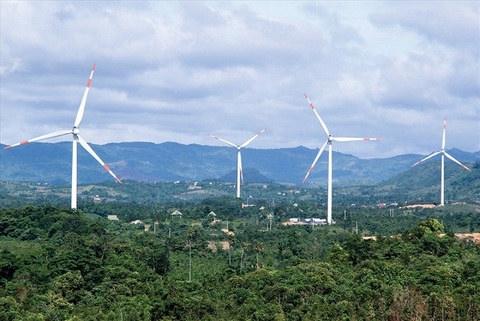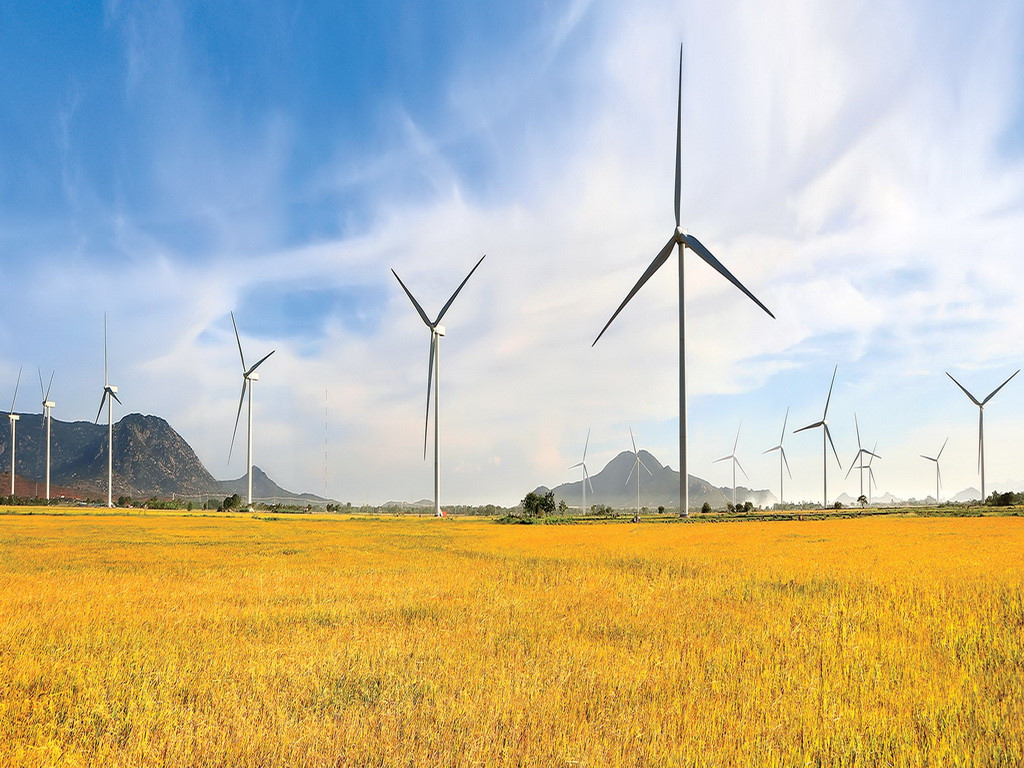Ngo Thi To Nhien, managing director of VIET (Vietnam Initiative for Energy Transition), with 3,200 kilometers of coastline and total sea area of 1 million square kilometers, said Vietnam has great potential for offshore wind power development.

The annual average wind speed at the height of 100 meters could be up to 9-10 meters per second in many waters of Vietnam.
In the waters around Phu Quy or Bach Long Vi islands alone, the installation capacity could be up to 38GW each.
According to the data of the World Bank's Energy Sector Management Assistance Program (WB-ESMAP), the estimated technical potential of Vietnam's offshore wind power is 261 GW for fixed foundation and 214 GW for floating foundation turbines.
In 2019, Vietnam once granted a license to carry out field work activities in Ke Ga project in Binh Thuan province. Vietnam is laying down legal foundation to facilitate investments in the field.
Nhien thinks Vietnam needs to determine the target power capacity for group of projects in the national electricity development program, and build a legal framework and criteria for assessing the possible impact on society and the environment.
| Some experts believe that it’s not a right time for Vietnam to think of offshore wind power because equipment prices are still overly high and Vietnam lacks contractors with good experience in equipment installation, repair and maintenance. |
Besides, state management agencies need to set up a legal basis to grant four kinds of licenses – license for leasing the seabed for field work; license for leasing the sea surface; license for the right to connect the national electricity grid; and tmlicense for transmitting electricity to the national grid.
Nhien believes that there should be a state management agency in charge of coordinating the approval of offshore wind power projects. This should be a specialized division belonging to the National Steering Committee on the Implementation of the Vietnam Marine Economic Sustainable Development Strategy by 2030.
The Politburo's Resolution No 55 released on February 11, 2020 shows the principles for building policies to support offshore windpower development and the breakthrough policies for the development. The electricity purchase price is 9.8 US cents per kwh.
Developing offshore wind power in Vietnam remains a controversial issue. Some experts believe that it’s not a right time for Vietnam to think of offshore wind power because equipment prices are still overly high and Vietnam lacks contractors with good experience in equipment installation, repair and maintenance.
Nhien said many investors have developed land and nearshore wind power projects. Along with the capacity and experience in deploying marine projects and logistics systems of the oil and gas industry, Vietnam will be able to develop offshore wind power associated with logistics services in the years to come.
Tu Linh

Ha Tinh approves $695 million wind power plant
The People's Committee of the central province of Ha Tinh has approved a wind power project with a total investment of VND16.2 trillion (US$695.3 million).

Vietnam wind power sector to see growing opportunities: Fitch Solutions
Vietnam contains one of the highest potential for wind power in the region, as it is endowed with high wind speeds particularly in the offshore or near-shore areas.
 Vietnam’s offshore windpower potential is great, and the opportunities to develop it must not be missed just because of difficulties in the development of this new industry.
Vietnam’s offshore windpower potential is great, and the opportunities to develop it must not be missed just because of difficulties in the development of this new industry.